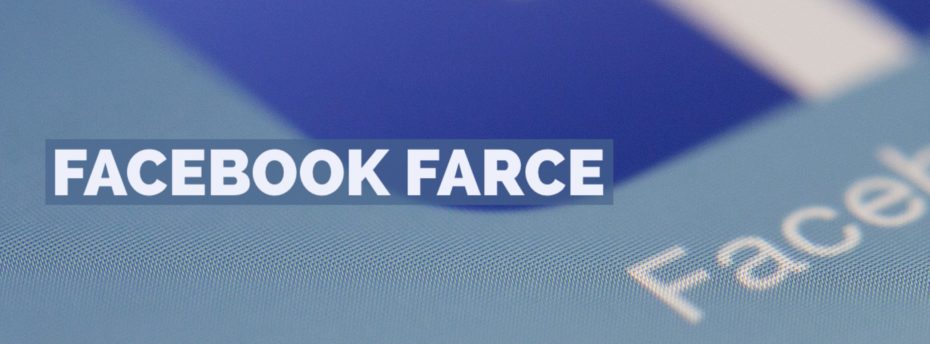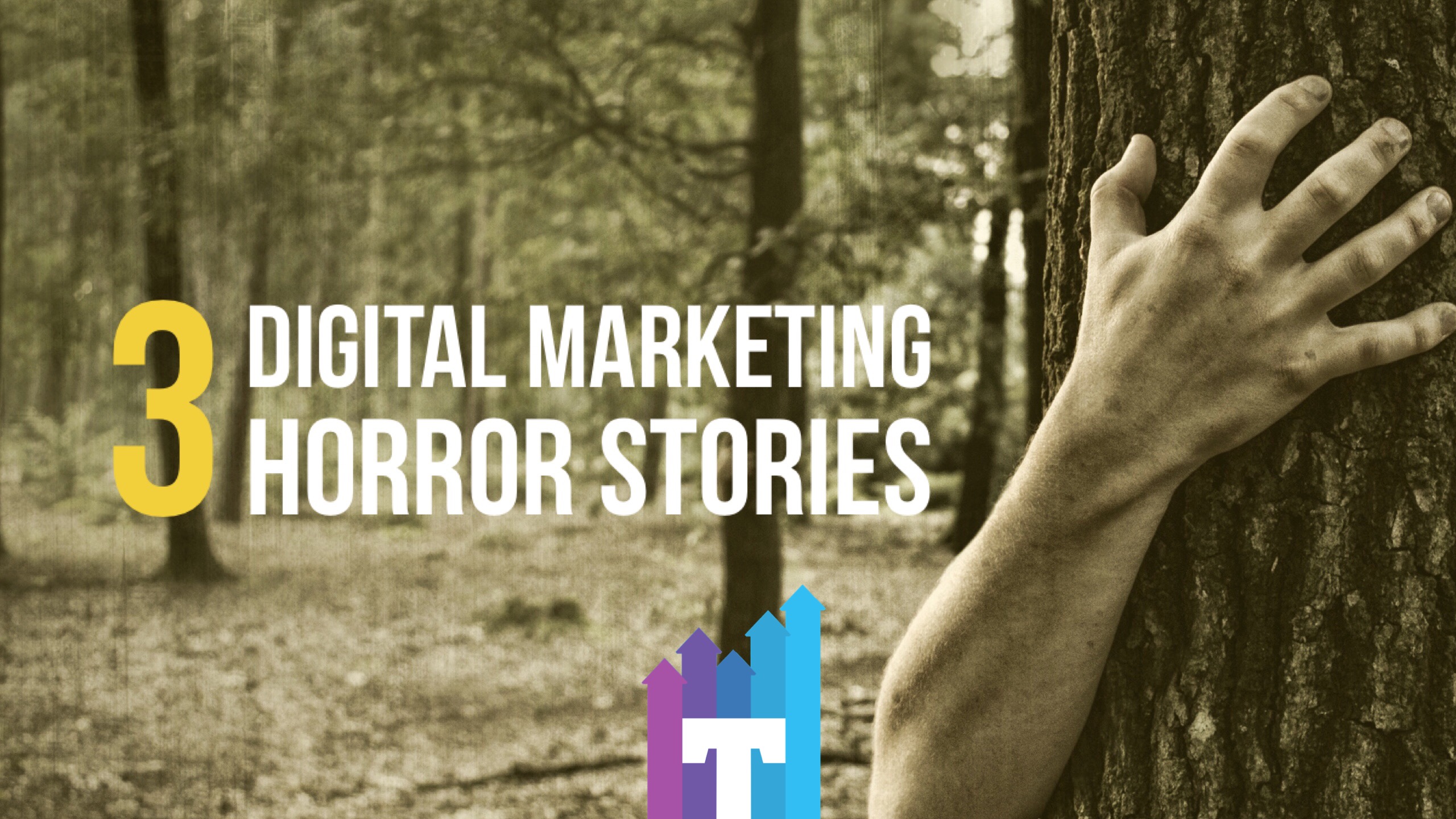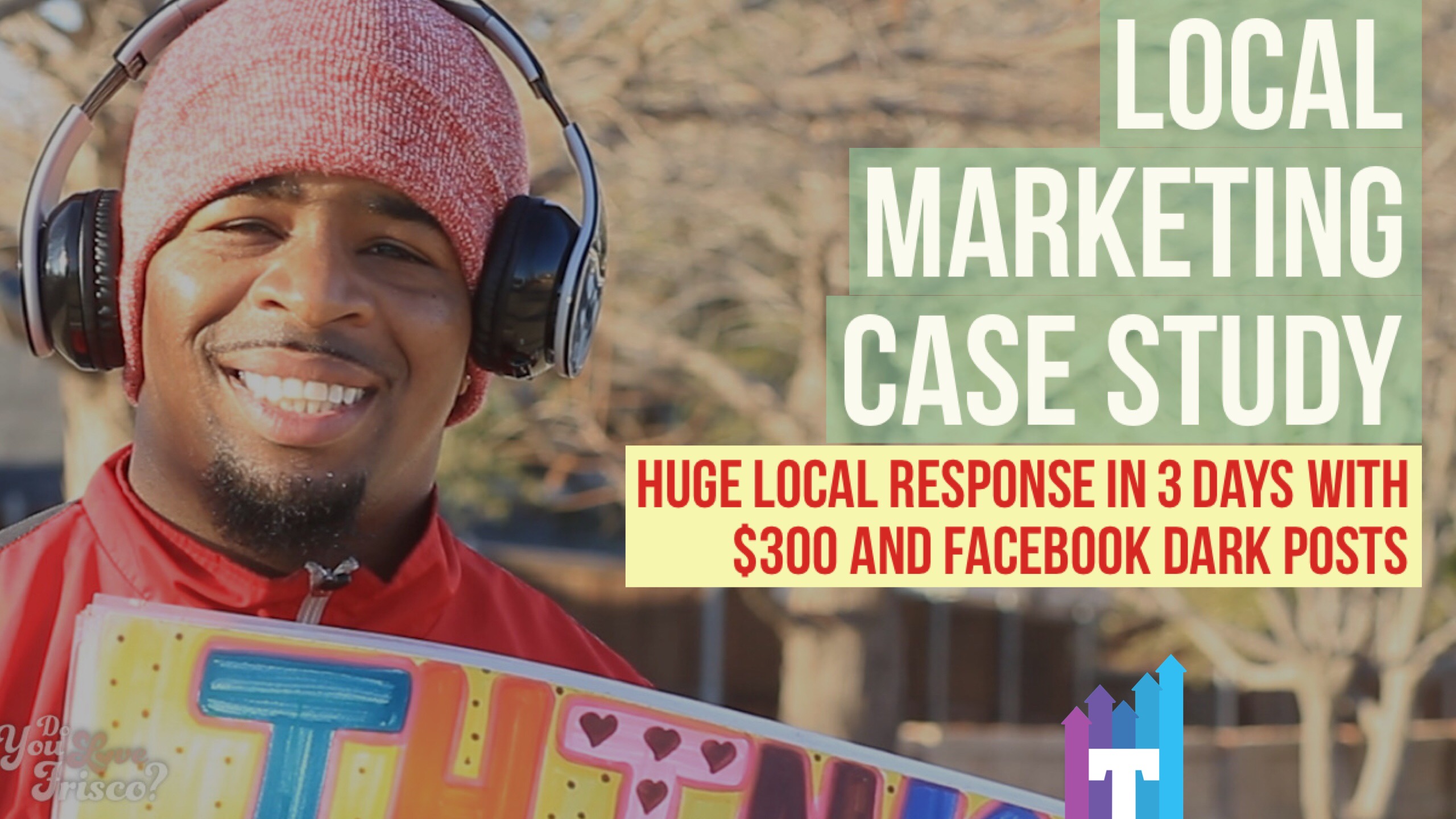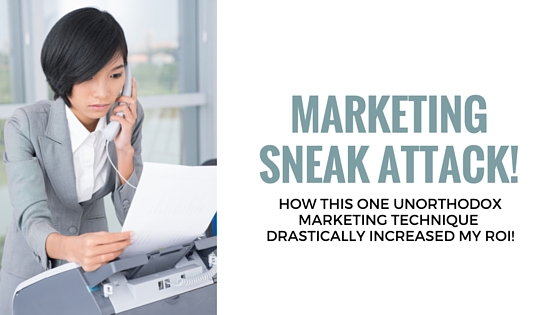Having started a few internet businesses, I have spent most of my time finding and utilizing ways to get customers online. I have tested and re-tested various methods of acquiring customers and making connections, utilizing everything from magazine ads and direct mail on the print side to Google Adwords, banner ads, Facebook ads, Twitter ads, social media posting and so on and so on. At this stage, I have a pretty good idea of what’s what, but many years ago, I was a bit of a greenhorn and was at the mercy of the various SEO companies or digital marketing companies that I utilized over the course of my business. Here a are a few examples where my ignorance was taken advantage of and ways you can avoid similar pitfalls as a startup or small business owner.
Note: I debated whether to call these “horror stories” but anytime large chunks of money are flying out the window with little return, I consider that pretty horrific, hence the moniker “Horror Stories.”
The Pay Per Click Punisher

Ever since the launch of Google’s Adwords in 2000, businesses have been heavily relying on the internet behemoth’s primary advertising venue, many almost exclusively. Early on in my startup, I hired a Pay Per Click company to help me with my Google AdWords campaign. At this point, I had actually been using AdWords for quite some time and felt I had a reasonable grasp of how it worked. I started using Adwords in 2001 only a year after the advertising system launched. At that time, ads were costing me around 5 cents per click and most people weren’t really using them. It was a brilliant time and quite frankly, I did very well with my first business. Somewhere along the way I bought a book on Pay Per Click to further grasp the basic tenants of Adwords including quality score, landing pages, keywords, negative keywords, long tail keywords, etc.
However, in business, even if you feel you have a good grasp on something, you often have this itchy feeling in the back of your mind that there is someone out there that understands it “better” than you do OR that you need to have someone managing this full time for you. Both of these can be very valid points to consider and as a business person, you will likely reach a moment when you either need to hire someone to handle your marketing in-house, or hire someone to handle it externally. However, there are a lot of snake oil salesman out there who simply want your money.
So, I hired a PPC “expert” who charged me somewhere around $2000 a month on a revolving contract. He quickly dug into my account and started adding keyword after keyword. His solution seemed to be to simply “add more keywords.” However, more keywords meant more money. He didn’t seem too concerned with whether or not these keywords were relevant or whether or not they were keywords that people would be clicking with the intent to buy. To him, traffic was traffic. As long as there were keywords to be clicked, he was doing a good job. He sold me the old line: “You need to wait at least 3 months before you will know for sure if this will work.”
Now, there is SOME truth to that, but through my experience in business, I have found that that this particular statement can also mean, “I want at least 3 months of your money before you bail on me after realizing my services are a crock.” Now, with SEO, it MIGHT take 3 months before you know what’s truly going on simply because that’s how Google works. Usually, you can have an idea within a month to a month and a half, however. Over the years I have simply learned to be somewhat suspicious when anyone tells me it will “take at least 3 months” and if I don’t start seeing at least some results within a month I am usually about to head out the door.
With all these new keywords added, it didn’t take long before my clicks were going way up, my costs were going way up, but my conversions were NOT going way up. In fact, I doubled my PPC cost in about a month, but did NOT double the revenue from my PPC efforts. It actually stayed pretty close to the same. I did give this company, who were supposedly experts in this field OVER 3 MONTHS to simply provide them with the benefit of the doubt and nothing improved. So, I kicked them to the curb and went back to managing my own campaigns. I cut out all of the keywords they added and narrowed things down to iterations of my most popular keywords. Then, I added a LOT of negative keywords, cut out a number of countries that were eating my budget alive but not buying anything (yeah, you know who you are India…) and made sure that my tracking was working in Google analytics. I ended up making the same amount of money, but SPENDING HALF AS MUCH!
There came a point, however, that my campaign was plateauing. So, again, I began to doubt myself, so I actually called Google to discuss it with them. The kind lady on the other end of the phone proceeded to tell me that she had never seen a campaign where almost every ad had a quality score of 10/10. If you don’t understand what this means, it means that if the Google Ad is for Dog Food, and the page that people land on after clicking the ad is all about Dog Food, you will likely have a high “quality score.” However, if the page they land on is a general page about Dogs, your score will likely be around 4 -7 and if the page has nothing to do with dogs, your score will be VERY low. Most of our ads were hitting 10/10 because we had a unique landing page for each ad. Over the years, I have realized that if you know you are capable at something, there is a point where you have to stop second guessing yourself and trust in your abilities and knowledge.
The issue with our ad campaign wasn’t that the campaign itself was defective. Our campaign was quite good. The problem was our ability to spend. This particular company was a bootstrapped company going up against very large funded companies like iStockPhoto and ShutterStock, etc. We simply could not outspend them and so our campaign had plateaued. From my experience, when you need to move to the next level, you have two options. You either throw more money at what is working (or optimize it) or do something else (pivot.) When you realize that you don’t have more money to spend, it is best to simply recognize the truth and move on to other marketing methods.
[tweetthis display_mode=”box”]When you need to move to the next level, you have two options. Spend more on what is working or blaze a new trail.[/tweetthis]
SEO Shenanigans

Once we had our PPC game on point, I started to think more about SEO and organic traffic. Again, I started to second guess myself and think that there had to be someone out there that had some type of magic that I didn’t when it came to search engine optimization. I started to do some research on SEO companies. This was difficult to do online because at the time there were a lot of scam sites that would “rank” SEO companies, but the rankings weren’t really legit. They were basically paid rankings and if you had the cash, YOU TOO could be “the best SEO company around!” At the time, these SEO directories/ranking systems were pretty much all I had to go on and being the trusting chap, so I proceeded to contact one of the SEO companies who promised to get us on the front page for several keywords.
Once the SEO company got started they began sending me reports each month showing me how they were creating our rankings. I figured out the system pretty quick. They were posting “articles” on various “blogs” with several strategic links in them pointing back to my website. I put these words in quotes because these were anything but real articles and the blogs were mere shadows of actual blogs.
The reason these blog links helped was due to the anchor text linking method they used. If you were trying to rank your “products” page for the keyword “Quality Toothbrushes” you would simply place a link within an article on “Toothbrushes” that used the link text, “Quality Toothbrushes” with the actual link pointing to the products page on your website. Google would see this as a vote up for this keyword/page combination and if someone searched for “Quality Toothbrushes,” there would be a better chance of you products page coming up first in Google.
This was a common tactic, and did it work? Partially. There were a couple of keywords that we did actually rank rather high for, so on the surface it seemed a positive result. However, the blogs they were posting these articles on were quite sketchy. They were clearly created SOLELY with the purpose of posting these poor quality articles. The poor quality articles were written SOLELY with the purpose of including the “anchor links” which were placed SOLELY with the purpose of sending what SEO’s call “link juice” back to our website. You likely know that “Link Juice” is the term used to refer to the flow of authority to websites via links on the internet. The more links coming into a website from the more quality websites, the higher ranking that site will receive.
Before Google rolled out their Penguin updates around 2012, these tactics worked and they worked well. A LOT of SEO’s used them to the fullest extent which caused a lot of wreckage when Google dropped the hammer. You see, this linking method was considered “Black Hat” meaning it wasn’t what Google wanted you to do, but it worked for the time being. And yes, because this company was a ranked “SEO” company, I paid them several thousand a month to create these poor quality backlinks from these fake crappy quality blogs located somewhere in the Philippines.
Here’s what happened. When Google dropped their Penguin update around 2012, it greatly penalized most of the sites that had these poor quality links pointing back at them. It was a disaster. Our ranking for those few keywords dropped drastically, along with our revenue. In fact, eventually, to remove the penalty, we literally had to manually SEEK OUT these links and the blogs that still hosted them and request that the blog owner remove the article or links so that the damage might be undone. Unfortunately, while we were able to get most of the links removed, undoing the damage was more difficult. It was a significant setback for us. Lesson learned. When Google came through with their Penguin update it did some massive damage, but ultimately it was good damage. The truth is, that SEO company was doing garbage work and taking advantage of good companies who were just trying to do the right thing in most cases.
The Facebook Farse

While this isn’t so much about a particular marketing company, it’s about some general ideas about social media. For the longest time, social media, whether it be Facebook or Twitter (as the primary two for the longest of time) were touted to many as a critical factor, if not the critical factor in one’s marketing arsenal. That, in order to succeed, you must spend a good chunk of your time posting to your social media feed, connecting with others, following and being followed.
For a while, I somewhat bought into this and attempted to dive into the social media world. We, of course, set up our fan pages and Twitter accounts, our Twitter cards and Open Graph tags…. Yet, learned rather quickly that “posting to your social media networks” didn’t provide the ROI that we hoped for. In fact, sometimes it just seemed like a big waste of time and effort.
Now, that isn’t to say that social media isn’t important. Quite the contrary! In fact, in many ways, it is very important and depending upon your business model, it could very well be crucial. It isn’t social media that is the issue, but the way it is used. Many have been under the impression that if they treat their business networks like they treat their personal networks, everything will work out splendidly, when this, in most cases, couldn’t be farther from the truth.
On Facebook, for example, most of us connect with a very small group of close friends who already care about who we are and don’t need any incentive to do so. If they get tired of seeing our lives on Facebook, they de-friend us or un-follow us. They tolerate us posting about the food we eat or the multi-level marketing items we sell because we already have a solid relationship with them that, in most cases, goes far beyond a business relationship.
Unless the day to day of your business life is VERY exciting, it is unlikely that your Facebook fans are interested in the day to day of your business. While it would be great if every factory or office had relationships or interactions that were the cause for a mini reality show, it just isn’t the case for the most part. In order to succeed at social media, it is critical that you consistently provide value to your audience (which means you need to have or build an audience to begin with.) It isn’t about posting a picture of the buffet you brought in for lunch or the guest speaker you had who talked to your team about insurance. It IS about thinking very hard about what VALUE you can provide your audience. What blog posts you can write that they will actually want to read and share because the post provides them with the information they truly will appreciate. In other words, it is all about the content you create. It is about the blog posts you write and the videos you create that you then share on social media. Facebook, Twitter, Instagram should be conduits of the high-quality content you are putting out. The truth is, however, social media isn’t for everyone. Then again, some think it isn’t for them, but it really is.
Many are calling Facebook ads the new Google Adwords. No, I am not referring to those Facebook ads that used to show up in the sidebar that everyone pretty much ignored. I mean the ability to put an article, post or video in front of the exact targeted audience you want to see it. In fact, it is likely that a traditional advertisement is the WORST thing you could be doing on Facebook right now. But, if you are creating high-quality content, whether it be information or entertainment and placing it right in front of your target audience, which Facebook continues to make easier and easier, you are likely to begin making a seriously positive impact. In fact, you are likely reading this post because I did just that. I targeted you because you are a business owner or CEO. I created this post which is all about the pitfalls of marketing your business and it appeared valuable to you (and I hope that by the time you finish it, you will feel it was.)
There are people making a killing in social media. However, they either have great content or a great personality and loads of consistency. I can speak for most CEOs, Founders and especially bootstrappers and startups, it is very hard to be consistent with social media when you are trying to start or grow a business and tangible results are so far down the road.
That said, I DO think that “social media” which is a long-term game of putting out a consistent amount of quality content and building a fan base by doing so, is different than utilizing targeted Facebook ads to put high-quality content directly in front of very targeted individuals who are more than likely to be interested in your offerings. That is where the social media issue has backfired a bit. I talk with business owners who are so turned off to social media that they don’t even want to experiment with Facebook’s targeting system. This, in my opinion, is a serious mistake. There are a number of creative and even not so creative strategies that can be used to make FB’s targeting work for you. DON’T throw out Facebook’s targeted ad system out with the bathwater. It is, in my opinion, the most exciting thing going in digital marketing right now.
Cutting Through the Noise
As it is in most industries, there are always going to be snake oil salesman. I think there are several ways that you can avoid some of the marketing and digital marketing pitfalls I mention in this article because the reality is, there have never been so many opportunities to get your brand, your company or your product out there to be seen by the marketplace.
SO… MANY… CHOICES… So, how do you make the right choices? There are a few options. First, I would recommend you get into some type of a networking group. Early on, I sat in front of my computer for hours on end working and thinking that was the right thing to do, when I should have been making contact with other entrepreneurs who were going through the same things I was. I don’t know why I didn’t network more than I did, but you can gain some great perspective from others going through the same things you are. Trade shows are great for this, LinkedIN, local networking events, your Chamber of Commerce et al. Additionally, there might be a local entrepreneur group or startup group. Here in Dallas, we have the Dallas Entrepreneurial Center which started up a number of years ago and has been a great resource. I know in various cities there are startup groups like this which provide mentoring. The key is to try to find someone with experience who can give you an unbiased viewpoint with the focus of helping your business.
Trade shows are great for this, LinkedIN, local networking events, your Chamber of Commerce et al. Additionally, there might be a local entrepreneur group or startup group. Here in Dallas, we have the Dallas Entrepreneurial Center which started up a number of years ago and has been a great resource. I know in various cities there are startup groups like this which provide mentoring. The key is to try to find someone with experience who can give you an unbiased viewpoint with the focus of helping your business.
That leads me to mentors and advisors. If you are going lone wolf with your business, I desperately urge you to find a mentor. Again, a great way to do this is to find a local business group that can connect you with a mentor. However, maybe your business model is one in which there are not many mentors locally that you connect with. Another option would be a site called clarity.fm. Clarity allows you to search, find and schedule a phone call with mentors and experts in almost every possible field. The calls are not free, they generally run about $1.00 a minute, but in some very difficult times, I have found this site invaluable. I VERY highly recommend it.
Finally, I recommend talking with a professional consultant who can provide you with perspective in ways mentors, advisors and friends cannot. I didn’t hire a marketing consultant until my company had gone through some rough spots, including a patent troll lawsuit, and was in a very defensive position. If I had to do it again, I would hire a consultant, or even multiple consultants early on when things were going well, so that we could surge forward from a strong place rather than try to play catch-up from a defensive position. The benefit of hiring a digital marketing consultant is just this. A consultant is someone who is on your side and is not interested in convincing you of your problems so they can sell you their fixes. Instead, they are interested in helping you know what is up and what is down. A good consultant will want to get down to business, shoot straight, and tell you what you need to hear, not what you want to hear.
All said, consultants generally are not cheap and you are paying a premium for information and perspective. This is one of the reasons I started the Skinny Dip program. I found myself wary of consultants wanting me to pay significant fees of $3,000 to $5,000 for them to run an audit on my business.
The Skinny Dip is an affordable solution generally running between $499 and $999 depending on your business size where I simply go ankle deep into your business to provide you with a base understanding of what is working and what isn’t. It is completely subjective and I also throw in some unique and creative ideas that I think might help your business take things to the next level. If you are interested, please let me know!
Thanks so much for reading this article. I would love to know what you think and I would love to hear some of your own horror stories!




